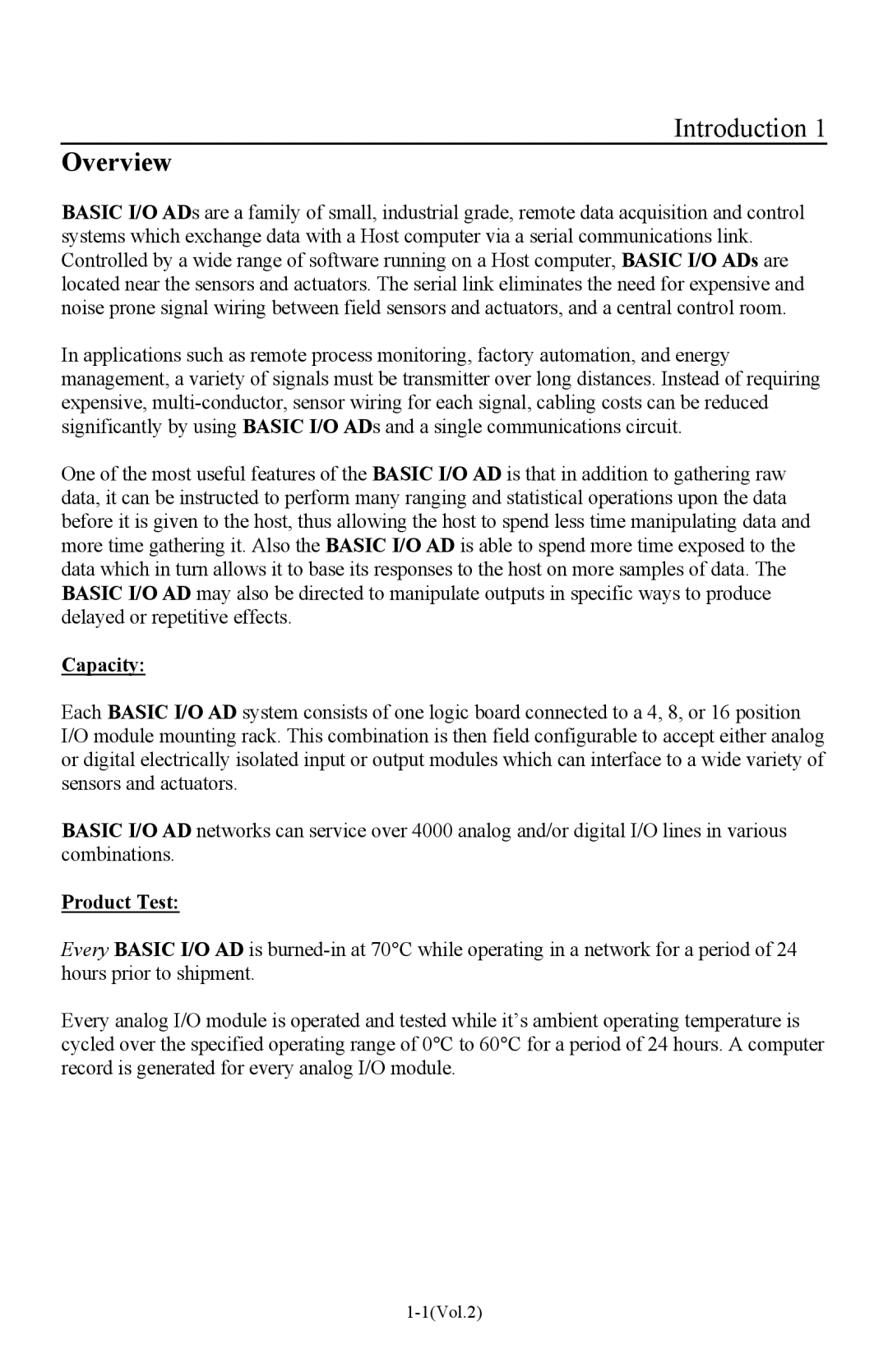Introduction 1
Overview
BASIC I/O ADs are a family of small, industrial grade, remote data acquisition and control systems which exchange data with a Host computer via a serial communications link. Controlled by a wide range of software running on a Host computer, BASIC I/O ADs are located near the sensors and actuators. The serial link eliminates the need for expensive and noise prone signal wiring between field sensors and actuators, and a central control room.
In applications such as remote process monitoring, factory automation, and energy management, a variety of signals must be transmitter over long distances. Instead of requiring expensive,
One of the most useful features of the BASIC I/O AD is that in addition to gathering raw data, it can be instructed to perform many ranging and statistical operations upon the data before it is given to the host, thus allowing the host to spend less time manipulating data and more time gathering it. Also the BASIC I/O AD is able to spend more time exposed to the data which in turn allows it to base its responses to the host on more samples of data. The BASIC I/O AD may also be directed to manipulate outputs in specific ways to produce delayed or repetitive effects.
Capacity:
Each BASIC I/O AD system consists of one logic board connected to a 4, 8, or 16 position I/O module mounting rack. This combination is then field configurable to accept either analog or digital electrically isolated input or output modules which can interface to a wide variety of sensors and actuators.
BASIC I/O AD networks can service over 4000 analog and/or digital I/O lines in various combinations.
Product Test:
Every BASIC I/O AD is
Every analog I/O module is operated and tested while it’s ambient operating temperature is cycled over the specified operating range of 0°C to 60°C for a period of 24 hours. A computer record is generated for every analog I/O module.
